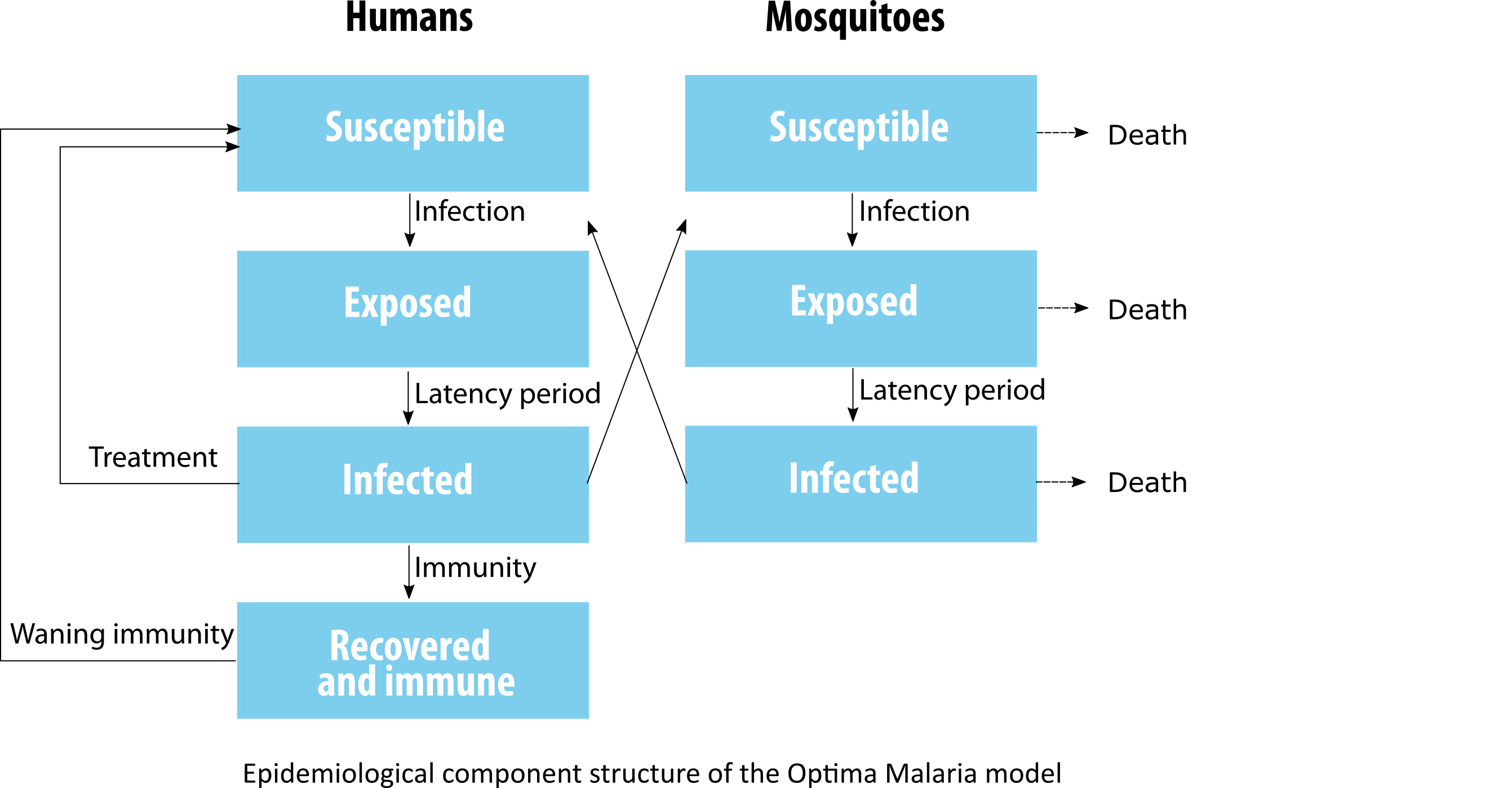Determining the optimal allocation of funding across malaria prevention and control programs to achieve maximum impact.
Optima Malaria
To download a copy of our malaria brochure, click here.To view our peer-reviewed publication that describes the Optima malaria model, please click here.
Globally it is estimated that in 2016, there were 216 million cases of malaria and 455,000 malaria-related deaths (2017 World Malaria Report). The burden of malaria in 2016 was similar to that for 2015 after years of declining malaria burden, illustrating a recent plateau in the success of the malaria response. To further reduce the malaria epidemic, it will be essential to cost-effectively allocate available funds. Substantial reductions in morbidity and mortality resulting from malaria infections can be achieved by optimizing investment towards the right interventions, targeted at the right people, and in the right places.
Optima Malaria is a modeling tool for providing evidence to governments to assist with the allocation of current or projected budgets across malaria control programs. The model contains a geospatial component to determine funding allocations that minimize disability-adjusted life years (DALYs) at both the national and regional levels.


 © Optima Consortium for Decision Science, Burnet Institute, Melbourne, 2025
© Optima Consortium for Decision Science, Burnet Institute, Melbourne, 2025